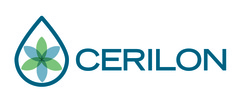Cerilon Fuels is the hub that provides the sourcing, marketing and supply of oil, gas and associate products to global markets.
Cerilon Fuels further provides specialist consultation, design and support through specialized tools and decisions support systems and simulation models to optimize your supply chain for increased benefit.
Based out of Calgary, Canada with global experience, Cerilon Fuels has access to a variety of products and global markets. Cerilon Fuels Inc is a subsidiary of Cerilon Inc.
The global economy is changing
The center of gravity in the global refining industry shifts away from developed nations toward emerging countries, companies throughout the oil and gas industry will need to rethink their approach to refining. Gasoline and diesel prices, long dependent on demand in developed nations, now fluctuate with developing nations’ soaring thirst for crude oil and fuels. The long-standing link between global crude prices, gasoline prices and Gulf Coast marginal refining economics has been broken. Hyper oil prices and environmental costs are pressuring margins, which could lead to more refining asset restructurings and sales, or even bankruptcies. Gasoline demand faces further weakening as more hybrids and electric vehicles enter the market and biofuels become more competitive. Yet despite excess current industry supply and low margins, oil companies continue to build out their capacity.
Despite the turmoil, certain regional and global dynamics offer a potential upside. Most of the upside will come from companies taking matters into their own hands. A sweeping restructuring of the industry is underway, affecting all types of companies and stimulating activity. As a result, international oil companies (IOCs), independents and NOCs need to think differently about how to do business.
All of these companies will need to adjust to shifts in refining trends. Companies face the most complex mix of risks and opportunities. As they think about how they can win, they can focus on three important questions: First, how can we benefit from the growing activity in emerging economies? Second, what is the right asset and investment portfolio? Third, how can we achieve world-class operational excellence?
How can we benefit from the growing activity in emerging economies?
The developing world—Asia in particular—will increasingly determine global fuels demand, causing much of the shift in the refining industry. OPEC estimates that between 2015 and 2020 demand for liquid fuels in the Asia-Pacific region will grow at 2% annually, while in North America and Europe, demand may decline slightly.
While demand is shifting, so is supply—in somewhat less logical ways. Despite current industry supply excess, companies continue to add capacity, primarily in developing countries. In “demand-rich” countries, companies seek to gain market share in fast-growing domestic markets. In oil-rich countries, NOCs want to promote the socioeconomic development of their home countries.
What to do?
With all of the changes, opportunities arise for companies to look at new markets, new suppliers and to optimize their supply chains.
We are repositioning ourselves to take advantage of the new centers of demand.
Cerilon Fuels further provides specialist consultation, design and support through specialized tools and decisions support systems and simulation models to optimize your supply chain for increased benefit.
Based out of Calgary, Canada with global experience, Cerilon Fuels has access to a variety of products and global markets. Cerilon Fuels Inc is a subsidiary of Cerilon Inc.
The global economy is changing
The center of gravity in the global refining industry shifts away from developed nations toward emerging countries, companies throughout the oil and gas industry will need to rethink their approach to refining. Gasoline and diesel prices, long dependent on demand in developed nations, now fluctuate with developing nations’ soaring thirst for crude oil and fuels. The long-standing link between global crude prices, gasoline prices and Gulf Coast marginal refining economics has been broken. Hyper oil prices and environmental costs are pressuring margins, which could lead to more refining asset restructurings and sales, or even bankruptcies. Gasoline demand faces further weakening as more hybrids and electric vehicles enter the market and biofuels become more competitive. Yet despite excess current industry supply and low margins, oil companies continue to build out their capacity.
Despite the turmoil, certain regional and global dynamics offer a potential upside. Most of the upside will come from companies taking matters into their own hands. A sweeping restructuring of the industry is underway, affecting all types of companies and stimulating activity. As a result, international oil companies (IOCs), independents and NOCs need to think differently about how to do business.
All of these companies will need to adjust to shifts in refining trends. Companies face the most complex mix of risks and opportunities. As they think about how they can win, they can focus on three important questions: First, how can we benefit from the growing activity in emerging economies? Second, what is the right asset and investment portfolio? Third, how can we achieve world-class operational excellence?
How can we benefit from the growing activity in emerging economies?
The developing world—Asia in particular—will increasingly determine global fuels demand, causing much of the shift in the refining industry. OPEC estimates that between 2015 and 2020 demand for liquid fuels in the Asia-Pacific region will grow at 2% annually, while in North America and Europe, demand may decline slightly.
While demand is shifting, so is supply—in somewhat less logical ways. Despite current industry supply excess, companies continue to add capacity, primarily in developing countries. In “demand-rich” countries, companies seek to gain market share in fast-growing domestic markets. In oil-rich countries, NOCs want to promote the socioeconomic development of their home countries.
What to do?
With all of the changes, opportunities arise for companies to look at new markets, new suppliers and to optimize their supply chains.
We are repositioning ourselves to take advantage of the new centers of demand.
